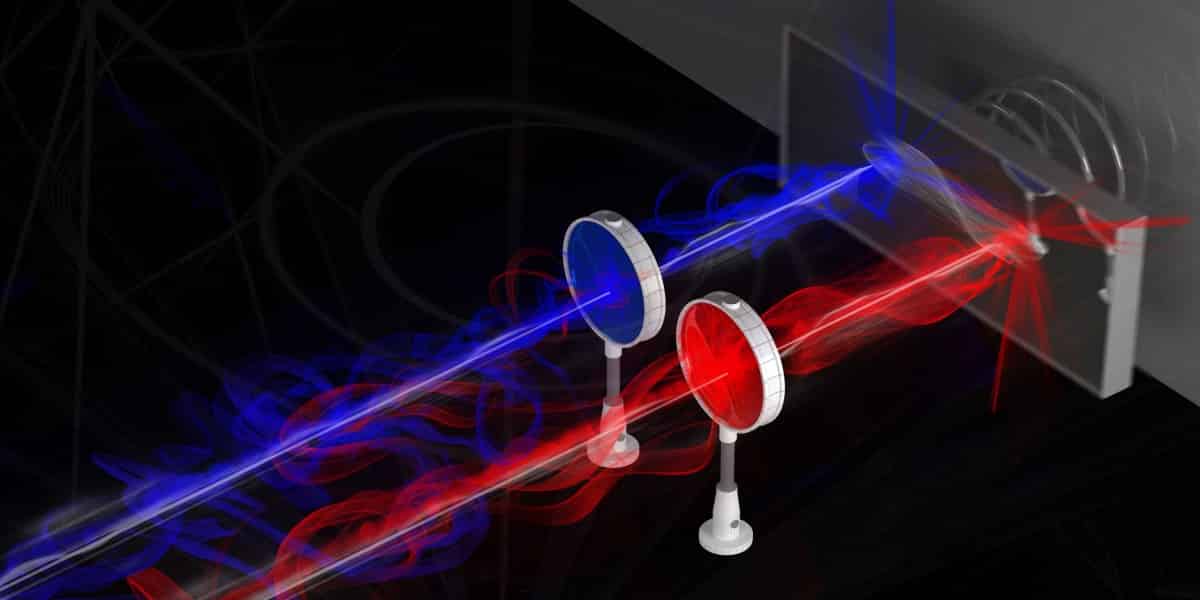
Quantum physics will bring us even faster computers and secure, tap-proof communication. However, there are still a number of problems to solve before the breakthrough. The prototype of a quantum interface, which was developed at the Institute for Science and Technology (IST) Austria, brings us one step closer to quantum internet. The transfer of information from one quantum computer to another becomes possible.
One problem with quantum computers is that the electronics only function at extremely low temperatures of a few thousands of a degree above absolute zero (-273.15 °C). If the temperature in the computer rises, all information is destroyed. The reason for this is superconductivity – a macroscopic quantum state of materials whose electrical resistance drops abruptly to zero when the temperature drops below the transition temperature. In the case of the quantum computer, these are microwave photons that are extremely sensitive to noise and losses.
This temperature sensitivity currently makes it almost impossible to transfer information from one quantum computer to another. The information would have to pass through an environment with high temperatures it could not survive in.
CHALLENGE QUANTUM INTERFACE
Networks of classical computers are usually connected via optical fibre lines, which are very robust against interference. Scenarios to use this successful technology also for quantum computers would be the following:
- To create a connection that can convert the microwave photons of the quantum computer into optical information carriers;
- To develop a device that generates entangled microwaves and optical fields as the basis for quantum teleportation;
MECHANICAL OSCILLATOR
Both variants promise a bridge between the optical system at room temperature and the cold quantum world, explains Shabir Barzanjeh, postdoc in Professor Johannes Fink‘s group at the Institute of Science and Technology (IST) Austria. He is the first author of a recently published study that produced a mechanical oscillator that can serve as an interface between the sensitive cold quantum computers and the signals in optical fibers.
PRINCIPLE OF ENTANGLEMENT
The researchers made use of entanglement, one of the basic principles of quantum mechanics. This describes a connection between two particles in which a change of state of one particle simultaneously leads to a corresponding change of the other particle. The phenomenon is already used in quantum cryptography for the secure encryption of data but is also suitable for use in microwave radiation. Barzanjeh: “Imagine a box with two outputs. If the outputs are entangled, the radiation emitted by one can be characterized by observing the other”.
Physicists at IST Austria have succeeded for the first time in generating entangled radiation with a mechanical object. The device could serve as an interface between quantum computers.
GIANT IN THE QUANTUM WORLD
Entangled radiation could already be generated before. But the researchers around Professor Fink used a mechanical object for the first time. The silicon beam generated by the group measured a length of thirty micrometers and a total number of about one trillion (10^12) atoms. This is huge for the quantum world. Quantum effects are easiest to exploit at the atomic level. It is much more difficult to realize them on a larger scale. Barzanjeh:
“The question we asked ourselves was: Can you generate entangled radiation with such a large system? Now we know the answer is yes.”
OTHER APPLICATIONS
However, there are other possible applications for the mechanical oscillator. It could also improve the performance of gravitational wave detectors. This is an experimental setup that measures small space-time disturbances (gravitational waves) predicted by Albert Einstein‘s General Theory of Relativity.
Professor Fink sees even more general applications for the mechanical oscillator: “Our measuring principle could (…) in the future contribute to verifying or falsifying the potential quantum nature of other systems that are difficult to study, such as living organisms or the gravitational field.”
INTEGRATION OF QUANTUM TECHNOLOGY
The physicists around Professor Johannes Fink at the Institute of Science and Technology Austria are working on the development of quantum technologies for chip-based devices in the electrical, mechanical and optical fields. Possible fields of application are simulation, communication, meteorology and sensor technology.







